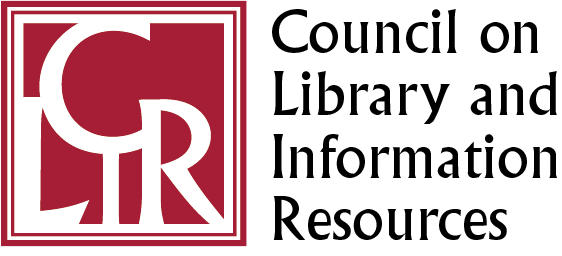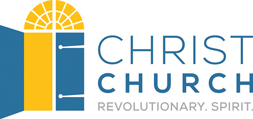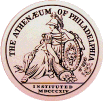First Baptist Church, Philadelphia, PA
Metadata
Title
First Baptist Church, Philadelphia, PA
Digital Identifier
First Baptist Church, Philadelphia, PA
Description
Notable for its early leadership in Baptist organization and evangelism, the First Baptist Church of Philadelphia was prominent both in its region and city and in the transatlantic community of Baptists. Begun in 1698 as a mission of the more suburban Pennepack (now, Lower Dublin) Baptist Church, First Baptist soon became the leading congregation for the city, region, and colonies, gaining independent status from Pennepack in 1746.
In 1707 the church hosted the organizing meeting of the Philadelphia Baptist Association, the first lasting inter-regional organization of Baptists in America, and over the years provided a disproportionate share of this group’s officers. From the beginning, the lives of this association and the First Baptist congregation were intertwined, with the church meeting house hosting meetings of the association and welcoming delegates, called messengers by the Baptists, from as far south as Charleston and as far north as Boston. By the 1760s, the first decade for which minutes survive, the congregation had gained prominence beyond its modest size, including among the transatlantic Baptist network. This prominence had to do with its leaders hosting and shaping the role of the Philadelphia Baptist Association, to which far-flung congregations wrote letters that began, “Dear Mother.”
The life of the congregation and its leaders was also intertwined with that of its city, with several ministers taking teaching posts at the University of Pennsylvania, then the College and Academy of Philadelphia. William Rogers, for example, came from New England to pastor the church but remained in that post for only three years, though active in the congregation and as a supply preacher until his death in 1824. Like several other Baptist ministers, Rogers served as a military chaplain during the American Revolution, an event that made havoc of the congregation’s finances and leadership. While these Baptists supported the American rebellion as a fight for necessary liberties, their former pastor Morgan Edwards criticized the rebels until 1775 when he was convinced to revise his opinion. With his excellent preaching, historical research and publications on early Baptists, and support for formal education leading to the founding and support of Brown University, Edwards embodied the strengths of Baptists. It was under Edwards’ leadership that First Baptist built a new and larger meeting house at the same time accepting the need to lend their pastor to the larger Baptist cause and arranging for supply preaching while Edwards traveled the colonies as an evangelist, church organizer, and historian of Baptists. Despite these successful efforts toward gaining respect and leaders for Baptists, Edwards’ connection with the Philadelphia congregation grew strained during the 1780s, largely because Edwards struggled through bouts of drinking and subsequent church meetings for discipline, only being restored to the congregation’s fellowship in late 1788.
When in 1814 Baptists from twelve states gathered to form a national organization in support of Baptist missions, the meeting was at the First Baptist meeting house in Philadelphia, with two of the four officials chosen being laymen from that congregation and a third, William Staughton, a former pastor. Throughout the next century, the congregation grew in numbers and influence in the city and in national and global mission programs, despite conflicts related to theology, leadership, and relationships with daughter churches, including two competing First African Baptist congregations. Its early interest in circulating religious pamphlets, as well as Philadelphia’s wealth of printers, made it feasible for American Baptists to locate their publishing operations in the city, where they remained until 1961, when operations moved to a new building and printing plant in Valley Forge.
In 1707 the church hosted the organizing meeting of the Philadelphia Baptist Association, the first lasting inter-regional organization of Baptists in America, and over the years provided a disproportionate share of this group’s officers. From the beginning, the lives of this association and the First Baptist congregation were intertwined, with the church meeting house hosting meetings of the association and welcoming delegates, called messengers by the Baptists, from as far south as Charleston and as far north as Boston. By the 1760s, the first decade for which minutes survive, the congregation had gained prominence beyond its modest size, including among the transatlantic Baptist network. This prominence had to do with its leaders hosting and shaping the role of the Philadelphia Baptist Association, to which far-flung congregations wrote letters that began, “Dear Mother.”
The life of the congregation and its leaders was also intertwined with that of its city, with several ministers taking teaching posts at the University of Pennsylvania, then the College and Academy of Philadelphia. William Rogers, for example, came from New England to pastor the church but remained in that post for only three years, though active in the congregation and as a supply preacher until his death in 1824. Like several other Baptist ministers, Rogers served as a military chaplain during the American Revolution, an event that made havoc of the congregation’s finances and leadership. While these Baptists supported the American rebellion as a fight for necessary liberties, their former pastor Morgan Edwards criticized the rebels until 1775 when he was convinced to revise his opinion. With his excellent preaching, historical research and publications on early Baptists, and support for formal education leading to the founding and support of Brown University, Edwards embodied the strengths of Baptists. It was under Edwards’ leadership that First Baptist built a new and larger meeting house at the same time accepting the need to lend their pastor to the larger Baptist cause and arranging for supply preaching while Edwards traveled the colonies as an evangelist, church organizer, and historian of Baptists. Despite these successful efforts toward gaining respect and leaders for Baptists, Edwards’ connection with the Philadelphia congregation grew strained during the 1780s, largely because Edwards struggled through bouts of drinking and subsequent church meetings for discipline, only being restored to the congregation’s fellowship in late 1788.
When in 1814 Baptists from twelve states gathered to form a national organization in support of Baptist missions, the meeting was at the First Baptist meeting house in Philadelphia, with two of the four officials chosen being laymen from that congregation and a third, William Staughton, a former pastor. Throughout the next century, the congregation grew in numbers and influence in the city and in national and global mission programs, despite conflicts related to theology, leadership, and relationships with daughter churches, including two competing First African Baptist congregations. Its early interest in circulating religious pamphlets, as well as Philadelphia’s wealth of printers, made it feasible for American Baptists to locate their publishing operations in the city, where they remained until 1961, when operations moved to a new building and printing plant in Valley Forge.
Source
Minutes Books of First Baptist Church of Philadelphia, A. D. Gillette, editor, Minutes of the Philadelphia Baptist Association from A.D. 1707, to A.D. 1807 (Philadelphia: American Baptist Publication Society, 1851), and William Williams Keen, The Bi-Centennial Celebration of the Founding of the First Baptist Church of the City of Philadelphia (Philadelphia: American Baptist Publication Society, 1899).
Selected Items from the Collection
Baptism certificate of Sarah Sallows, 1762
Baptism certificate listing a series of questions about the baptismal candidate's beliefs and commitments, to which she has answered yes. On this profession, Sarah Sallows was baptized by Morgan Edwards in the Schuylkill River on June 22, 1762.…
Poor book, 1767-1769
This book records the amounts donated by members to First Baptist Church to help the poor, and the amounts given to the poor from First Baptist Church, from 1767 to 1769. Each entry includes the date, donor or donee's name, and amount donated.
Poor book, 1774-1775
This book records the amounts donated by members to First Baptist Church to help the poor, and the amounts given to the poor from First Baptist Church, from 1774 to 1775. Each entry includes the date, donor or donee's name, and amount donated.
Membership register, 1772-1844
For members of First Baptist Church from 1772 to 1844, this bound manuscript lists their date and manner of admission to the church (whether by baptism or transfer,) date of marriage, and notes on date and manner of removal from membership, including…
Marriage register, 1761-1894 [partial scan through 1870]
Register of marriages occurring at First Baptist Church between 1761 and 1894. Because of the limitation of the funding source for digitization, this volume was scanned only through the page for marriages occurring in 1870.
It appears the…
It appears the…
Letters of transfer, 1783
Four letters, both to and from First Baptist Church, confirming individuals' good standing for transfer to new church membership in 1783.
Letter of transfer, 1784
Letter providing proof of good standing for Elisabeth Davis at the Church of Christ meeting in Welshtract, for transfer to the Church of Christ meeting of Philadelphia. Some of the text is illegible.
Letters of transfer, 1785
Six letters, both to and from First Baptist Church, confirming individuals' good standing for transfer to new church membership in 1785.
Congregational minutes, 1757-1769
Congregational minute book begun in 1760, which begins with notes about meetings that occurred during the previous three years, before organized record-keeping was established, and runs to 1769. Entries include dates of meetings, members present, and…
Committee minutes, 1760-1761
On August 11, 1760 the First Baptist Church appointed a committee to "to Settle the Church Affairs, and Examine the State of the Church Purchases, Gifts and Donations, Given to the Said Church, and get them well Secured where they are not, and to…
Congregational minutes, 1771-1775
Congregational minute book includes dates of meetings from 1771 to 1775, members present, and business conducted. Topics include but are not limited to: property bequeathed to the church; the filling of positions such as moderator, clerk, treasurer,…
Congregational minutes, 1779-1786
Congregational minute book includes dates of meetings from 1779 to 1786, members present, and business conducted. In addition to commonplace business such as repairs to the buildings and grounds, admission and dismission of members, appointment of…
Congregational minutes, 1786-1791
Congregational minutes include dates of meetings, members present, and business conducted from 1786 to 1791. Topics include but are not limited to: baptism, admission, exclusion, readmission, and transfer of members; discipline for drinking, fraud,…
Congregational minutes, 1792-1795
Congregational minutes include dates of meetings, members present, and business conducted from 1795 to 1806. Topics include the baptism, dismission, transfer, exclusion and readmission of members, church finance, charity for the poor, and repairs and…
Congregational minutes, 1795-1806
Congregational minutes include dates of meetings, members present, and business conducted from 1795 to 1806. Topics include but are not limited to: collection of pew rent and management of donations and legacies; payments to church employees such as…
Congregational minutes, 1806-1813
Congregational minutes include dates of meetings, members present, and business conducted from 1806 to 1813. Topics include but are not limited to: income from pew rents, house rents, legacies, and donations; baptism, dismission, and transfer of…
Orphans book, 1795
On February 16, 1795, the members of First Baptist Church established "a fund for the relief of Orphans and other indigent Persons." This bound manuscript contains details of how the fund was established and administered, and a list of members who…
Membership register, 1746-1824
This register begins with a corrected list of the members of the church at its founding, and those added in the initial years. It then lists each member's admission to the church by baptism or letter of transfer. It also includes dates and causes for…
Trustee minutes, 1794-1836
The meeting minutes of the Trustees of First Baptist Church from 1794 to 1836 contain the date of each meeting, the trustees present, the topics they discussed, and the resolutions they passed. Trustee business included appointments to positions such…
Agreement to remove burials to Mount Moriah Cemetery, 1860
Mount Moriah Cemetery was established in 1855, on the outskirts of Philadelphia. As the population grew and land in Philadelphia became scarcer and more valuable, many churches had their burials removed to more rural locations. After moving to a new…
Burial ground expenses, 1768
One page, front and back, documenting "an account of work and materials" done at First Baptist Church in 1768. Expenses include, for example, supplies such as stone, brick, sand, wood, and nails, and services such as relocating corpses from a bank…
Lists of burials for removal to Mount Moriah Cemetery, 1860
Mount Moriah Cemetery was established in 1855, on the outskirts of Philadelphia. As the population grew and land in Philadelphia became scarcer and more valuable, many churches had their burials removed to more rural locations. In 1860, after moving…
Miscellaneous burial ground records, 1799-1901
Miscellaneous records of the First Baptist Church burial grounds, dating from 1799 to 1901, first at the La Grange/Arch Street site and then at Mount Moriah Cemetery. Items include: a resolution by the trustees in 1799 to raise the cost of interment…
Mount Moriah Cemetery committee minutes, 1859-1860
Mount Moriah Cemetery was established in 1855, on the outskirts of Philadelphia. As the population grew and land in Philadelphia became scarcer and more valuable, many churches had their burials removed to more rural locations. After moving to a new…
Mount Moriah Cemetery deed transcript, 1859
Mount Moriah Cemetery was established in 1855, on the outskirts of Philadelphia. As the population grew and land in Philadelphia became scarcer and more valuable, many churches had their burials removed to more rural locations. After moving to a new…
Resolutions in regard to interment, 1846
One printed page, addressed "To the Members of the First Baptist Church and Congregation," dated May 11, 1846 and outlining policies and prices for interment in the First Baptist burial ground, including a pew rent requirement.
Inscriptions copied from tombstones and monuments, 1859
"Inscriptions copied from Tomb Stones and Monuments in the Grave Yard of the First Baptist Church of Philadelphia - (Lagrange Place - above Second St.) Dec. 3 1859 By Horatio Gates Jones."
An alphabetical index starts on image 24, although most of…
An alphabetical index starts on image 24, although most of…
Mount Moriah Cemetery burial ground book, 1860-1928
Book containing records of sales for the Mount Moriah Cemetery, dating from 1860 to 1928. Each entry contains the date, name of purchaser, lot or grave number purchased, and cost. The first two flyleaves contain notes on the "Section of Church Plot…
Permits for interment, 1811-1825
Book containing permits for interment in the "Ground of the First Baptist Church, Philadelphia," dating from 1811 to 1825. Each permit or stub contains the name of the person buried (or the name of a father or husband,) the date of burial, and the…
Permits for interment, 1825-1928
Book containing permits for interment in the "Ground of the First Baptist Church, Philadelphia," dating from 1825 to 1860, and later at Mount Moriah Cemetery, from 1860 to 1928. Notes on the prices for interment established in 1828 and 1846 are…





